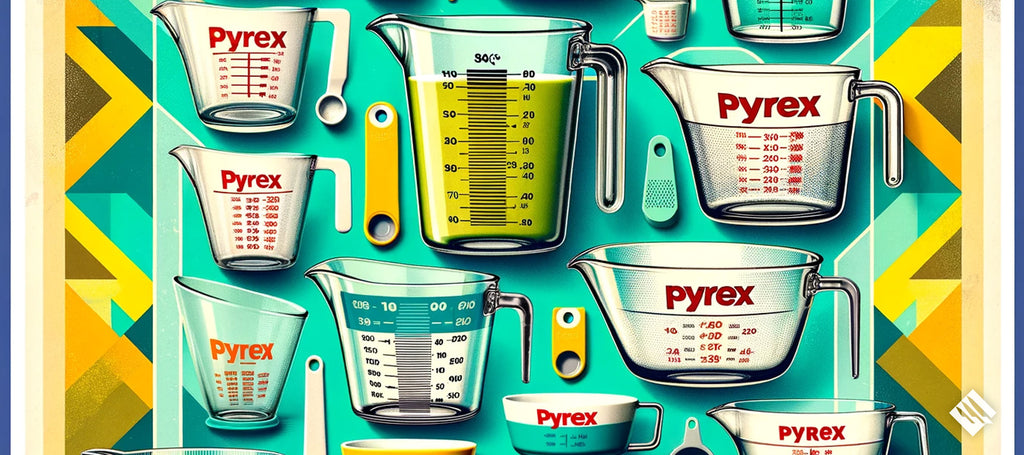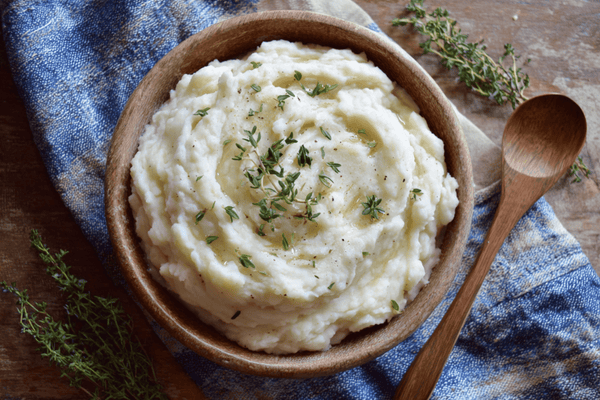Introduction
In the realm of glassware, the names PYREX and pyrex often emerge, sparking curiosity and sometimes confusion among consumers and enthusiasts alike. This article aims to demystify the differences between PYREX and pyrex by delving into their histories, manufacturing processes, material compositions, uses, and notable distinctions. Whether you're a seasoned chef, a science professional, or simply a curious reader, understanding these differences will enlighten your perspective on everyday glassware and help you make informed choices for your kitchen or laboratory.
Historical Context
Origins of PYREX

The story of PYREX begins with Corning Glass Works, an industrial glass company that manufactured battery jars, light bulbs, and other utilitarian items. In the early 1900s, Corning had developed a heat-resistant glass called Nonex for use in railway lanterns, which were prone to shattering when exposed to sudden temperature changes. The company was looking for new applications for this durable glass [1].
In 1913, Jesse T. Littleton, a physicist newly hired by Corning, discussed this challenge with his wife Bessie over dinner. When Bessie mentioned that her ceramic Guernsey casserole dish had recently shattered in the oven, she wondered if Nonex might work better for baking. Jesse brought home the sawed-off bottoms of two Nonex battery jars for her to try. Bessie successfully baked a sponge cake in one of these improvised dishes, noting that it cooked evenly, released easily from the glass, and baked faster than in traditional metal or ceramic dishes [1].
Encouraged by Bessie's kitchen experiments, Corning scientists Eugene Sullivan and William C. Taylor refined the formula and patented a glass that was safe for cooking. By 1915, Corning Glass Works began selling this new product as "Py-rex." According to company accounts, the name was selected for how nicely it rolled off the tongue and continued Corning's tradition of using "ex" in their glass formulas, though early advertisements showing "fire-glass" printed beneath Pyrex suggest the company was also "playing with pyre" [1].
Over the decades, PYREX became synonymous with durability and high quality, expanding its reach to households and laboratories worldwide. The original borosilicate formulation was particularly valued for its exceptional thermal shock resistance and chemical durability.
The Emergence of pyrex

A significant change occurred in 1998 when Corning sold its consumer products division to World Kitchen LLC (now known as Corelle Brands). This transition marked a shift in the material composition of consumer pyrex products in the United States from borosilicate glass to tempered soda-lime glass .
However, it's important to note that in Europe, Arc International continues to produce PYREX branded products using borosilicate glass. This creates a global distinction where the same brand name may represent different glass compositions depending on the manufacturing region and branding presentation.
Understanding the Composition
Borosilicate Glass (PYREX)
Borosilicate glass contains approximately 80% silica, 13% boric oxide, 4% sodium oxide, and 2-3% aluminum oxide. This composition results in a low coefficient of thermal expansion (3.3 × 10^-6 /°C compared to 9.0 × 10^-6 /°C for soda-lime glass).
Key Properties:
- High Thermal Resistance: Can withstand temperature differentials of up to 165°C without cracking, making it suitable for direct transfer from freezer to oven up to 300°C.
- Chemical Durability: Highly resistant to chemical corrosion (pH 1-14), making it ideal for laboratory use with various reagents.
- Visual Characteristics: Often has a slight bluish tint when viewed against white light.
- Weight: Typically lighter than comparable soda-lime glass items.
Soda-Lime Glass (pyrex)
Soda-lime glass typically consists of about 70-74% silica, 12-16% sodium oxide, 5-11% calcium oxide, and smaller amounts of other compounds [4]. This composition is the most common type of glass used in windows, bottles, and everyday glassware.
Key Properties:
- Moderate Thermal Resistance: When tempered, can tolerate temperature differentials of approximately 55-60°C before risking thermal shock.
- Impact Resistance: Tempered soda-lime glass has greater resistance to mechanical impacts and drops compared to borosilicate glass.
- Visual Characteristics: Tends to appear clearer or with a slight greenish tint.
- Weight: Noticeably heavier than comparable borosilicate glass items.
Comparative Analysis
| Feature | Description for PYREX (Borosilicate) |
|---|---|
| Material Composition | Borosilicate Glass (contains ~13% boric oxide) |
| Thermal Expansion Coefficient | 3.3 × 10^-6 /°C |
| Thermal Shock Resistance | High (tolerates up to 165°C differential) |
| Maximum Safe Temperature | Approximately 300°C |
| Chemical Resistance | High (pH 1-14 resistant) |
| Impact Resistance | Moderate |
| Typical Markings | "PYREX" in all capitals, often raised letters |
| Manufacturing Origin | Original U.S. production, current European |
| Weight | Lighter |
| Feature | Description for pyrex (Soda-lime) |
|---|---|
| Material Composition | Soda-lime Glass (higher alkali content) |
| Thermal Expansion Coefficient | 9.0 × 10^-6 /°C |
| Thermal Shock Resistance | Moderate (tolerates up to 55-60°C differential) |
| Maximum Safe Temperature | Approximately 232°C (450°F) |
| Chemical Resistance | Moderate (may etch with strong acids/bases) |
| Impact Resistance | High (when tempered) |
| Typical Markings | "pyrex" in lowercase, often printed |
| Manufacturing Origin | Current U.S. production, primarily Asian manufacturing |
| Weight | Heavier |
The following table provides a side-by-side comparison of PYREX (borosilicate) and pyrex (soda-lime) properties:
Applications and Uses
PYREX (Borosilicate)
Laboratory Equipment:
- Beakers, flasks, test tubes, and pipettes
- Chromatography columns
- PCR tubes and plates
- Specialized scientific apparatus
High-End Cookware:
- Laboratory-grade cooking vessels
- Premium European kitchenware
- Dishes designed for extreme temperature transitions
- Professional culinary applications
pyrex (Soda-lime)
Everyday Kitchenware:
- Baking dishes and casseroles
- Mixing bowls and measuring cups
- Food storage containers
- General cooking and baking vessels
Specialty Applications:
- Value-priced cookware sets
- Mass-market retail offerings
- Products where impact resistance is prioritized over thermal shock resistance
How to Identify PYREX vs. pyrex
The most reliable way to identify the type of glass in your PYREX/pyrex products is through visual examination of the branding and age:
- Logo Examination: PYREX (borosilicate) typically features all capital letters with raised lettering, while pyrex (soda-lime) uses lowercase letters that are often printed rather than raised.
- Age Assessment: Items manufactured before 1998 in the U.S. are more likely to be borosilicate glass. After Corning sold the consumer line to World Kitchen in 1998, U.S. production shifted to soda-lime glass.
- Origin Checking: European-made PYREX products (often marked "Made in France") typically use borosilicate glass, while most current U.S.-made products use soda-lime glass.
- Visual and Physical Properties: Borosilicate glass tends to be lighter in weight and may have a slight bluish tint, while soda-lime glass is typically heavier and may have a slight greenish tint.
Detailed Care Instructions
PYREX (Borosilicate) Care
- Temperature Transitions: While more resistant to thermal shock, avoid direct transfer from refrigerator to broiler
- Safe Temperature Range: Usable from -40°C to 300°C
- Cleaning: Dishwasher safe; for stubborn residue, soak in baking soda solution before washing
- Storage: Can be nested with protective layers between pieces
- Avoid: Direct stovetop flame without appropriate diffuser, thermal differentials exceeding 165°C
pyrex (Soda-lime) Care
- Temperature Transitions: Always allow to reach room temperature before transferring between extreme temperatures
- Preheating: Never preheat empty dishes
- Safe Temperature Range: Usable from -20°C to 232°C (450°F)
- Sudden Changes: Keep hot glassware away from wet or cool surfaces
- Cleaning: Allow to cool completely before washing
- Avoid: Temperature differentials exceeding 55°C, direct contact with heating elements
General Safety Guidelines for Both Types
- Always inspect for chips, cracks or scratches before use
- Replace damaged items immediately as they have compromised structural integrity
- Always use dry potholders when handling hot glassware
- Never add liquid to hot glassware
- Avoid extreme temperature changes (freezer to oven) without appropriate transition time
For more on kitchen safety, check out our guide on kitchen safety rules.
Common Problems and Solutions
| Issue | Solution for Both Glass Types |
|---|---|
| Cloudy appearance after washing | Use vinegar solution to remove mineral deposits |
| Food sticking/burning | Avoid metal utensils; soak with baking soda solution |
| Scratches appearing | Normal wear; continue using unless deep, which may affect thermal resistance |
| Sudden breakage | Check for impact damage or hidden cracks; ensure proper temperature management |
| Stains | Baking soda paste or non-abrasive cleaners designed for glass |
For more on maintaining your kitchen equipment, see our article on the ultimate guide to cleaning stainless steel pans.
Marketing and Consumer Acceptance
When Pyrex was first introduced to the market in 1915, Corning faced the challenge of convincing American cooks that glass dishes wouldn't shatter in the oven. To overcome this skepticism, they strategically partnered with home economists, who were emerging as new authorities in American households. Women like Sarah Tyson Rorer, founder of the Philadelphia Cooking School and editor of Ladies' Home Journal, tested Pyrex in their kitchens and provided endorsements that were featured prominently in advertisements, cookbooks, magazines, and newspapers [1].
Initially sold in hardware stores, Pyrex soon expanded to department stores. The marketing targeted modern cooks who valued efficiency, beauty, and economy. During World War I, the shorter cooking time required by glass became an important selling point as the country focused on conserving resources for the war effort. By 1920, Pyrex had begun finding its place in kitchens across America [1].
FAQs
Q: Can PYREX and pyrex be used interchangeably?
A: While they may serve similar functions in the kitchen, their different thermal resistances make it crucial to use each according to its intended purpose to ensure safety and longevity. Borosilicate PYREX can handle greater temperature changes, while soda-lime pyrex offers better impact resistance. Always follow the manufacturer's guidelines for the specific product you own.
Q: How can I tell the difference between PYREX and pyrex products?
A: Check the branding on the product. PYREX in all caps typically indicates borosilicate glass (especially in vintage pieces and current European products), whereas pyrex in lowercase suggests soda-lime glass (common in current U.S. products). Additionally, borosilicate glass is typically lighter, may have a slight bluish tint, and often features raised lettering.
Q: Is PYREX better than pyrex?
A: Neither is inherently "better" - they have different properties suited to different uses. Borosilicate PYREX offers superior thermal and chemical resistance, making it ideal for laboratory settings and extreme cooking conditions. Tempered soda-lime pyrex has better impact resistance and is more cost-effective for everyday kitchen use. The best choice depends on your specific needs and how you plan to use the glassware.
Q: Can pyrex glassware break from thermal shock?
A: Yes, both types can break from thermal shock, but with different thresholds. Borosilicate PYREX can withstand temperature differentials up to about 165°C, while tempered soda-lime pyrex typically tolerates differentials up to 55-60°C. Always avoid extreme temperature changes with any glass cookware and follow manufacturer's care instructions.
Q: Why did manufacturers switch from borosilicate to soda-lime glass?
A: The switch was primarily due to economic and environmental factors. Soda-lime glass is less expensive to produce, requires lower melting temperatures (reducing energy costs), and is more easily recycled. Additionally, when properly tempered, soda-lime glass offers superior impact resistance, reducing breakage from drops and impacts.
Conclusion
The difference between PYREX and pyrex extends far beyond mere capitalization. It reflects a divergence in material science, manufacturing processes, and intended applications. Borosilicate PYREX offers exceptional thermal shock resistance and chemical durability, making it ideal for laboratory use and extreme kitchen applications. Tempered soda-lime pyrex provides excellent impact resistance and cost-effectiveness for everyday cooking and baking.
By understanding these distinctions, you can make informed choices about which type of glassware best suits your needs, ensuring both safety and optimal performance in your kitchen or laboratory. Whether it's the scientific robustness of PYREX or the practical reliability of pyrex, each has earned its place in our kitchens and laboratories through decades of innovation and refinement.
For more information on kitchen equipment and cookware, check out our article on what makes a great cooking pan or learn about the best dutch oven for your kitchen needs.
References
- Brumagen, R. (2015). "The Beginning of Pyrex." The Corning Museum of Glass. Retrieved from: https://blog.cmog.org/2015/beginning-pyrex



